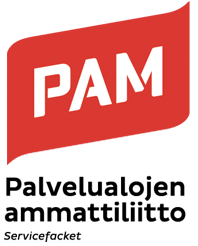PAM economist: The economy is growing in the service industry
The financial and employment situation in the service industry is good. The biggest fields are showing growth in net profits. PAM believes this indicates an opportunity to raise salaries.
Structural business and financial report statistics from Statistics Finland suggest that the net profit ratio in the service industry is on the increase, as it has been for several years. This is particularly apparent in the hospitality sector, which is also showing better growth in turnover after a brief lull. The strong trend boosting tourism was also mentioned in a report by the World Economic Forum, which indicated that Finland’s competitiveness as a tourist destination improved significantly overall from 2017 to 2018. At the moment, the same report considers the Finnish tourism industry to be the most competitive in the Nordics in terms of pricing. Main assets in the competition in the field are safety and environmental considerations.
“The service industry has had a good year overall, and I hope this will be reflected in the collective agreement negotiations in the spring,” says Olli Toivanen, PAM economist, of the financial and labour market situation in the service industry.
In addition to the tourism industry, turnovers have been on the increase particularly in the security and guarding sectors.
The number of part-time workers is a common concern in the service industry.
“For example, in 2018 the commercial sector had 19,300 part-time retail workers who wanted to work full time. These reluctant part-timers are often ignored in statistics, even though the phenomenon is significant for both the individual and society at large,” says Toivanen.
“The large percentage of part-time employees in the service industry should also be taken into account when discussing average income in the field. Typically, salary statistics only consider full-time employees, which creates an illusion of higher average salaries,” Toivanen points out.
It seems that the terms of employment in the hospitality and restaurant industry are developing a little differently from the rest of the service sector. After suffering from labour shortages, the tourism and restaurant industries are showing an increase in full-time employees on permanent contracts. Unfortunately, this trend of increasing full-time employment is not apparent in all areas of the service industry.



